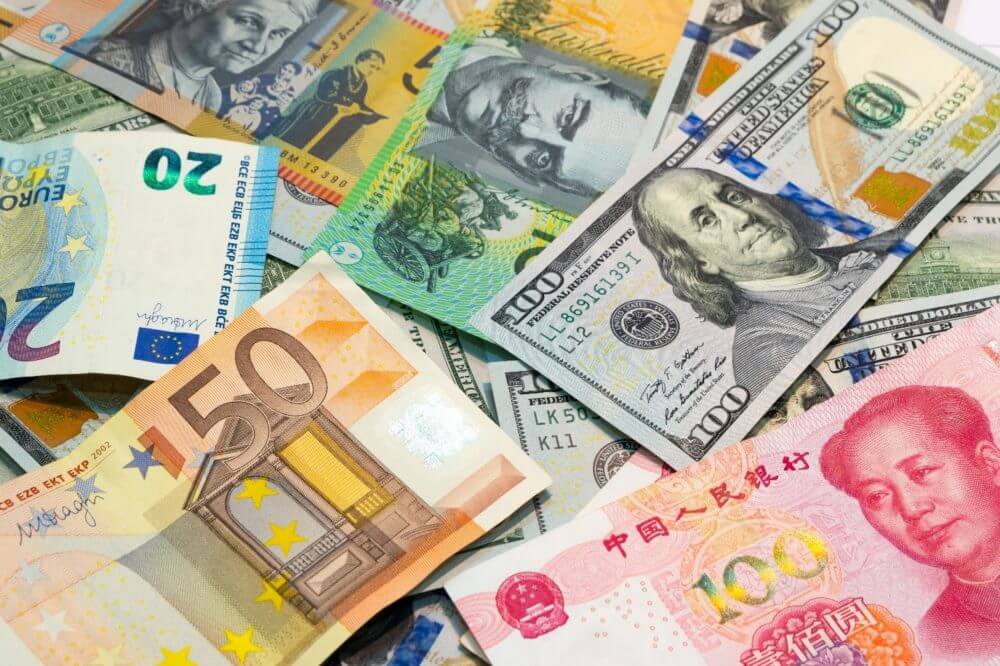The U.S. dollar plummeted down from one-month highs on Thursday. The U.S. Federal Reserve announced that interest rate hikes would start next year. Along with a pick-up in global market sentiment, that prompted traders to foray out of the dollar.
Various central bank meetings scheduled this week continue. Analysts think that Norway will become the first developed nation to increase interest rates since the covid-19 pandemic. The agency also struck a hawkish tone, going as far as to set the stage to start tapering bond purchases in November. The Fed is moving at a faster pace than experts had anticipated.
Thus far, nine of the U.S. central bank’s 18 policymakers hinted that borrowing costs would need to rise next year. As a result, the markets deduced that the first rate rise may occur in January 2023.
Meanwhile, the greenback and bond yields tumbled down, with many investors seeing the agency as having left some policy wiggle room to slow down if needed. At the same time, the Chinese market was subdued even though struggling Chinese developer Evergrande is unlikely to meet a bond coupon due on Thursday.
Peter Kinsella, the head of FX strategy at asset manager UBP, noted that a lot of the greenback strength we saw on Friday and Monday was due to risk aversion. While the Fed raised its interest rate expectations moderately for 2023, a terminal rate remains approximately 1.5%-1.7%. This rate is ok but not a situation where traders get an aggressive bid for the dollar. He also added that to get the greenback to strengthen more, the front end of the Treasury yield curve should steepen. However, that’s not happening.
How did the dollar index trade at last?
The dollar index stood at 93.277 on Thursday. It declined by a quarter percent on the day after soaring as high as 93.526.
The gap between 30-year bonds and five-year notes dropped below 100 basis points after the Federal Reserve’s statement, reaching the lowest level since July 2020, while the 2-year/10-year curve has fallen by more than 50 bps since March.
Meanwhile, the euro climbed up at $1.1716 on Thursday, reaching a month high. The British Pound also surged forward ahead of a Bank of England meeting. Analysts expect the bank to strike a hawkish tone.
On the other hand, the Norwegian crown remained flat against the greenback, but it managed to edge up by 0.2% against the euro. Its central bank meeting is also due soon, and the bank may decide to raise the interest rates.
The Norwegian crown has skyrocketed almost by 5% against the dollar in the past month. It is now near a three-month high versus the euro, as well. Thus, analysts think that significant gains are unlikely for the currency.
RBC analyst Adam Cole noted that long crown positioning had been rebuilt during the recent weeks. As a result, the hurdle is very high for a positive crown reaction. In addition, the Norges Bank had already hinted about the possibility of a second rate hike this year. Thus, forex markets will likely focus more on updated forward guidance. Cole also added that there is some risk that the bank revises its projections higher again.
What’s happening in Asia?
FX market moves were modest in Japan due to the holiday on Thursday. The Chinese yuan tumbled almost to its one-month lows against the greenback, though.
The Australian dollar soared by 0.3% against the dollar, reaching $0.7261. A strong set of strong PMI figures supported the Aussie. According to IHS Markit Purchasing Managers Index (PMI), Australian manufacturing activity reached 57.3, rising from 52 in August. It soothed investors’ fears of the impact of coronavirus-linked lockdowns.
Furthermore, Singapore equities headed for their best session in two months on Thursday. Asian shares steadied today after Evergrande’s chairman tried to reassure investors. The company’s unit also announced that it had managed to resolve a coupon payment on an onshore bond. Thanks to that statement, Singapore shares rallied, and Malaysia, Indonesia, and Thailand stocks gained around 0.5% each.
Consequently, several regional currencies surged forward after the U.S. dollar tumbled down from recent highs, including the Singapore and Malaysian ringgit. Manila stocks also traded higher by 0.4%, while the peso remained flat on Thursday. Investors expected the central bank of the Philippines (BSP) to keep interest rates at a record low.
Philippines’ inflation jumped to 4.9% last month. That is considerably higher than the policymakers’ 2%-4% target range. Experts warned that rising inflation would probably limit BSP’s room for further policy easing.
Analysts at Maybank stated that headline CPI showed an upside surprise in August, but despite that, the implementation of direct non-monetary measures will likely mitigate further supply-side pressures.
Meanwhile, the Thai baht managed to rebound from a 0.4% plunge earlier in the session. It was trading flat at last. The country recently decided to delay reopening cities to foreign tourists.










